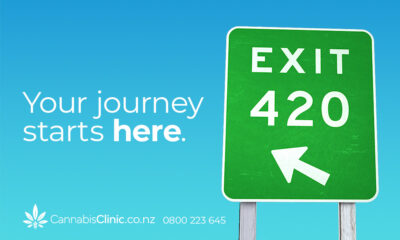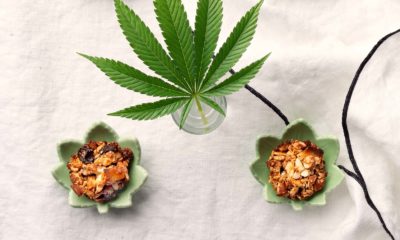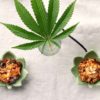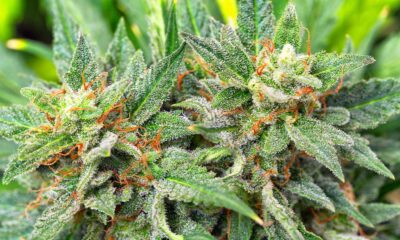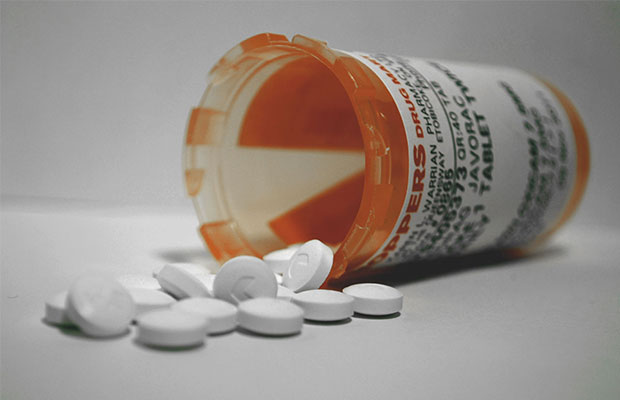
Joint Opinions
Children Accidentally Exposed to Pharmaceuticals 375% More Often Than Cannabis
An issue often reported in the news is children accidentally eating their parents edibles, but how commonplace is this risk compared to other common risks to children?
Last June, a study completed by Nationwide Children’s Hospital was published in the journal of Clinical Pediatrics. The study found that “the rate of marijuana exposure among children 5 years of age and younger rose 147.5 percent from 2006 through 2013 across the United States.”
The researchers observed different trends on this increase in states that legalized before 2000, and those that legalized after 2000. In the states that legalized pre-2000 (Alaska, California, Maine, Oregon, Washington) they saw nearly a 610 percent increase in the rate of children’s exposure to cannabis, and for the states that legalized after 2000, the researchers saw the rate of exposure increase almost 256 percent.
The biggest spike in exposure rates happened in the year that cannabis was legalized, indicating that many of these accidental exposures were likely caused by adults who were naïve cannabis users and unaware of proper storage techniques. Even non-legal states saw an increase of 63 percent, which could indicate some degree of illegal diversion from nearby legal states, but would need further study to substantiate. At first blush, the most startling finding seemed to be that “more than 75 percent of the children who were exposed were younger than 3 years of age.” Not surprisingly, “most children were exposed when they swallowed marijuana,” meaning parents need to properly stash their edibles in locked places away from the curious hands and mouths of young children.
Before giving into Reefer Madness, let’s stop and analyze their data. This study was designed to specifically look at marijuana exposures among children under 6, yet nearly 90 percent of their population was 3-years-old or younger. Had their sample been less skewed towards younger ages and more representative of the 3-6 bracket they had set out to study, there may have been radically different findings.
The researchers obtained their data by retrospectively analyzing the National Poison Data System (NPDS), “a comprehensive toxic exposure surveillance database with extensive quality control measures to ensure data completeness and accuracy.” The study’s authors considered any intentional exposure a miscoded case and omitted them, meaning if the child was a medical cannabis patient and Poison Control received a call, they would not be considered in this study, as this study was meant to examine only accidental exposures. While the focus of the study was on unintentional exposures, the researchers found that 2.4 percent of hospitalizations were for adverse reactions or other reasons, and another 5.4 percent had unknown causes. They observed few adverse side effects, with only 18 percent of exposed children needing hospitalization, 4 percent of those hospitalized had comas and 3 percent had seizures. The researchers did not have information regarding pre-existing conditions, such as epilepsy, which could explain both the seizures and cannabis exposure.
Follow Up with Nationwide Children’s Hospital
I covered this study when it came out last year and followed up with Henry Spiller MS, D.ABAT, and the research team, to ask some more in depth questions about the study, perceived flaws in their methodology and potential sources of bias. I asked Mr. Spiller about Nationwide Children’s sources of funding for their study and if funding from the Federal Government could fuel the Reefer Madness-like findings.
“The Feds do not fund us, we barely get any funding at all,” he said. “They do not tie our hands on reporting.”
After talking to Mr. Spiller, I was able to follow up with members of the research team via the PR representative for Nationwide Children’s Hospital; I never received confirmation as to which specific researchers replied to my questions. I asked the researchers about how the National Poison Data System (NPDS) might view a child who is a state-legal pediatric medical cannabis patient hospitalized for an intense seizure that their prescribed medical cannabis cannot control, trying to feel out if many of these cases may have been miscategorized due to the federal government’s view that cannabis is not a medicine. The researchers quickly dispelled this theory and said, “These were calls to poison control centers – people reporting poisonings, or asking what to do in the case of an ingestion. If a child was hospitalized, and was being treated with cannabis oil extract, that would not be called into a poison control center. Someone who is purposely receiving it for medical reasons would not show up in this database.”
Not as Dangerous as Other Things
The Nationwide Children’s study only looked at the rate of accidental ingestion of cannabis, the researchers stopped short of comparing that rate to the poisoning rates of other commonly found household items, like bleach, diaper cream, alcohol or other drugs. Since the federal government views cannabis as a drug, the best figure to compare to is the accidental ingestion of other drugs.
According to the Substance Abuse and Mental Health Services Administration, in 2008, “68.9 percent of 100,340 emergency department visits for accidental ingestion of drugs… were made by kids 5 or younger.” In just one year, there were nearly 70,000 ER visits made by children under 5 due to the accidental ingestion of drugs; the Nationwide Children’s study found only 2,000 cases of accidental cannabis ingestion in 13 years. In that same time span, from 2000-2013, there would have been an estimated 750,000 children admitted to emergency rooms for other drugs, if we include children who accidentally ingested drugs but didn’t go to the ER this number jumps to an incalculably larger number. Even at 750,000 children, that is an exposure rate 375 times higher than what was found with cannabis.
What Should Be Done
The best way to protect children from accidentally eating cannabis is by preventing access, the same way parents keep pills away from young children. That is easier said than done, such as when an 8-year-old boy in Oregon found a cookie on the ground, was specifically told not to eat it, but did so anyway, then got sick and went to the hospital. A better move may have been to take it away from the child, rather than merely providing instructions about not eating food you find on the ground in rock quarries. The child who ate THC-infused candy off a table in their own home is less guilty of bad behavior; that was the father’s negligence. When I was growing up, if candy was left on a table, chances were it was for me. My parents, who grew cannabis plants in our backyard when I was in elementary school, never left joints, edibles or anything medicated within my reach.
Outside of good parenting practices, clear state guidelines on edible dosing and child proof packaging are helpful. The research team found that, “increased efforts to establish child-focused safety requirements regarding packaging of commercially sold marijuana products are needed to help prevent more children from being exposed to this Schedule I substance.”
Last year, after the Nationwide Children Hospital study was released, Colorado moved to establish 10mg of THC as the standard dose for THC-rich edibles, joining Washington which already had 10mg as the standard dose. Whole packages are limited to 100mg totals in both states, meaning edibles can never go above 10 doses; Colorado and Washington both require child-proof packaging as well. Oregon is taking a more cautious approach and cutting those limits in half for 5mg doses and 50mg total. California’s recently passed the Medical Marijuana Regulation and Safety Act (MMRSA) that contains language dictating that the Department of Public Health will be drafting standards to govern the packaging of edibles, including figuring out what a dose will be. Currently, consumers in California may see products on the shelves right next to each other with radically different definitions on what a dose is, such as Kiva‘s blueberries, which are titrated to 5mg of THC per blueberry bite, and Korova products, where are each dosed at 50mg of THC.
Dr. Rob Hendrickson, the associate medical director for Oregon Poison Control, is “embarking on a study to calculate safe amounts of THC per kilogram of a child’s body weight.” Similar calculations are available online for parents who are dosing CBD to pediatric epileptic patients, and while these are useful guidelines, they are just that, a guide and not a hard-and-fast rule to follow. Using body weight alone overlooks many relevant factors, such as personal metabolism (which can vary widely), allergies, potential drug-to-drug interactions, genetic differences, pre-existing medical conditions and much more.
Tell us what you think!



